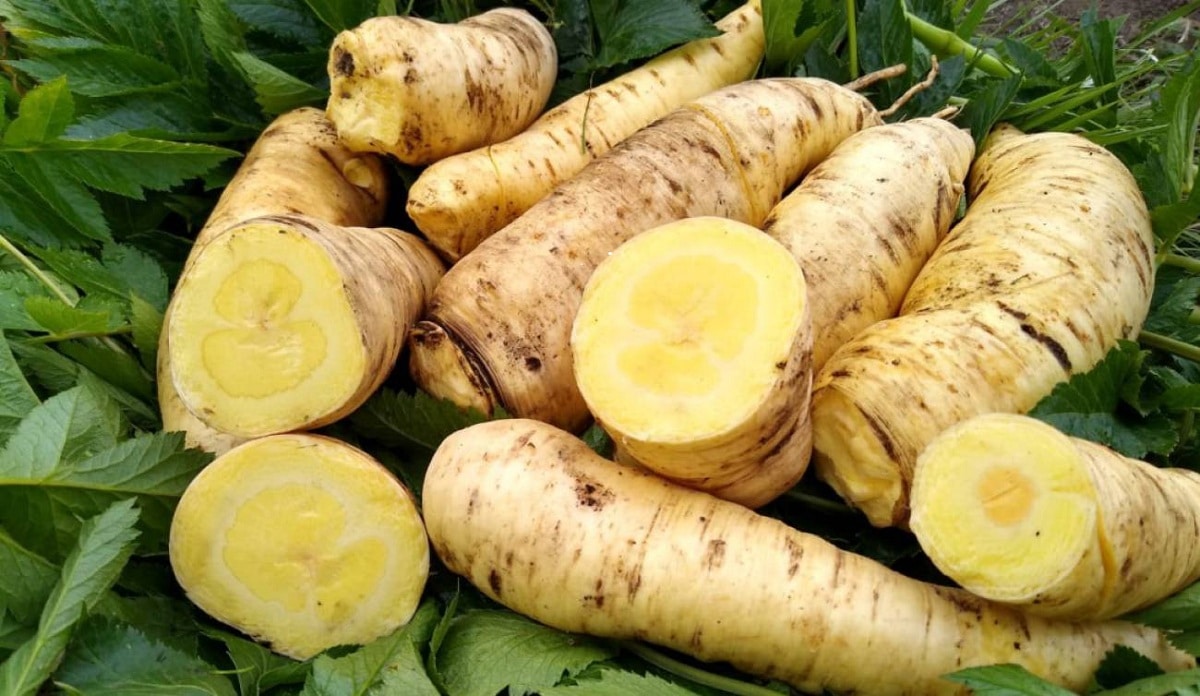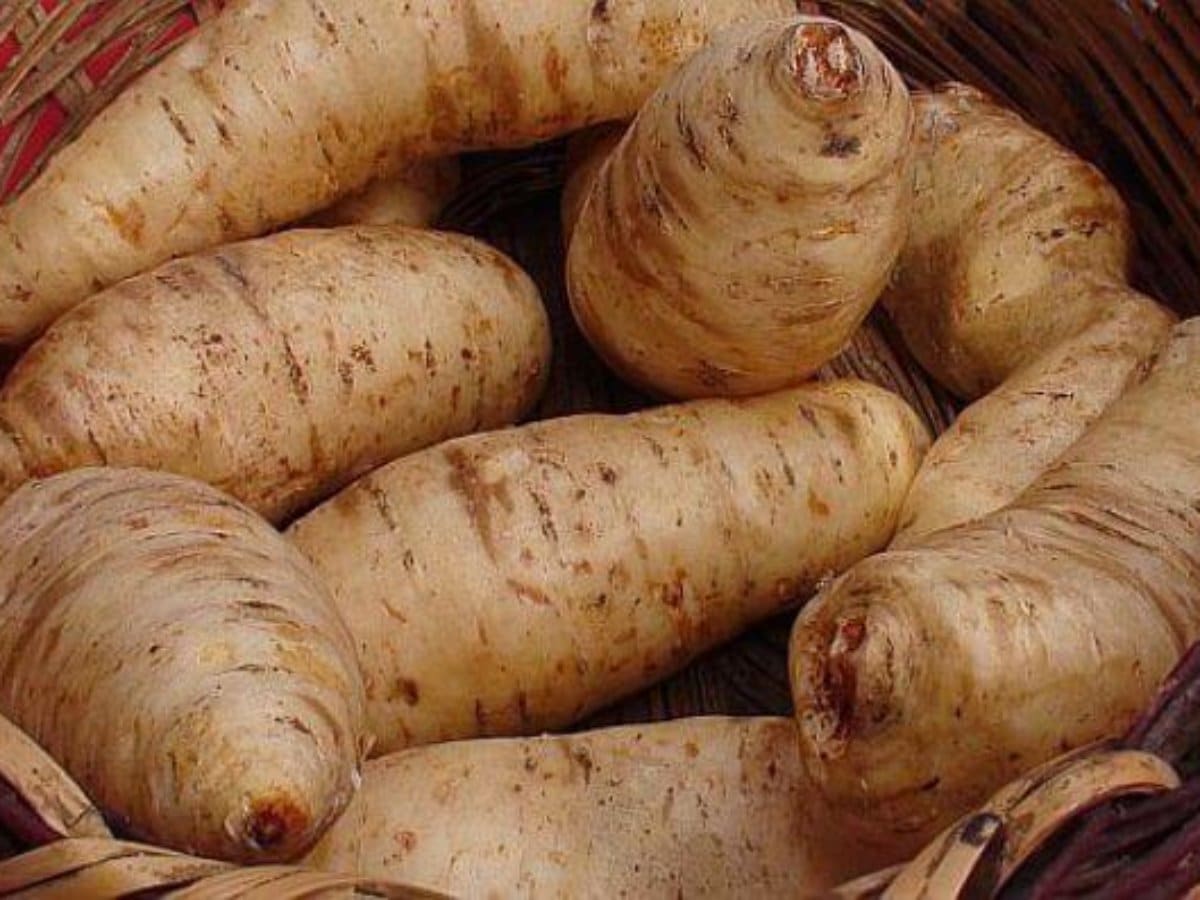
Within the tuber family we find the arracacha. It is also known by other common names such as celery criollo, racacha, virraca, mandioquinha or white carrot. Its scientific name is Arracacia xanthorrhiza. It is a perennial plant that is capable of living up to two years and belongs to the Apiaceae family where celery and carrots enter. It is known for its beneficial health properties.
In this article we are going to tell you all the characteristics, how it is sown and the properties of the arracacha.
Sowing the arracacha

This tuber is quite common in the Andean countries and the root is the most used part. It can have a yellow, purple or white color depending on the variety that we are growing. Its upper part is commonly used as livestock feed and is also in high demand for its medicinal properties.
We are going to analyze what are the variables to take into account if you want to plant the arracacha. The first thing we must take into account is the temperature and sun exposure. We must know that the arracacha is a plant that grows very slowly since their roots take approximately 14 to 18 months to be collected. There are some varieties that can be harvested up to 7 months after being sown. Since it is a very long harvest, it can be subject to numerous environmental changes and different hazards.
The optimum temperature so that this tuber can develop in good conditions It must be between 15 and 25 degrees. As for sun exposure, in order for it to grow normally and thrive at a good rate, you need continuous sun exposure. They can also be kept somewhere that has some shade, but it is not the most recommended. It must be taken into account that in the production of the roots they are closely linked to the solar exposure of the plant. Therefore, the ideal is to provide as much sunlight as possible so that these roots develop in good conditions.
Now we are going to analyze the substrate that is needed for cultivation. Normally, the best substrate indicator for growing is a soil with a sandy or sandy loam texture. The soil needs good drainage so that both irrigation water and rainwater do not accumulate. The drainage is responsible for making the water seep into the soil and not accumulate, reaching a pond of it. If the plant becomes waterlogged, the roots could rot and we could not have any type of harvest.
Regarding the pH of the soil, you need a medium acid soil that is around values of 5 to 6.
Irrigation and cultivation

Making the vegetative period of the plant coincide with the rainy period of the area in which we live is a good idea to save a lot of water in irrigation. Although it is a very resistant plant to drought, if it is not given adequate enough irrigation so that it can grow well, it will have a much lower production. On the contrary, overwatering is counterproductive. So is soil drainage and ponding.
To cultivate the arracacha we can use the shoots that it has in the crown. These sprouts can be found in up to a dozen. As usual They are distinguished since they measure between about 6 and 7 centimeters and they should be collected by selecting those donkeys that are healthier. Once we have collected them, we must let them dry for at least 3-4 days. After that, we will remove all the leaves and make a horizontal cut in the vine to facilitate its rooting.
If we want to grow it from seed, we must consider that normally its growth should start in a seedbed. The most recommended time to sow through seeds and is in spring. This is done because the seeds must spend their first winter covered with possible frosts in the area where we live. Sowing is carried out in the spring of the following year once the frost season has ended. Let's not forget that it is a plant that resists drought well but does not tolerate cold well.
The harvest is normally carried out in the fall season. If we get to assault the harvest period, the root acquires a woody appearance. Its quality deteriorates and the point can get where we can lose the entire crop. The roots also do not tolerate poor storage, so we must consume it as fresh as possible.
All these aspects are essential if we want the consumption of arracacha to provide us with all the benefits that our body provides.
Benefits and properties of arracacha

This food is a source of energy and easy to digest. The rich in vitamins C and B3 and minerals such as iron, magnesium, thiamine and phosphorus. It also has a great source of protein and dietary fiber. It was made into a very beneficial food for those communities where food is scarce. A single arracacha boat can provide us with up to 3270 kcal.
Apart from the many benefits it has as a food, we also emphasize the medicinal properties. These are the following:
- Helps with the treatment of chronic infections. The iron content of arracacha helps us to treat various chronic diseases related to the excretory and intestinal system. Prevents anemia in patients with kidney failure or iron deficiency.
- It is a healthy food to take during pregnancy. This is because its high iron content reduces the chances of having a premature pregnancy.
- Helps prevent cardiovascular diseases.
- Improves the health of the digestive system and body tissues.
- It prevents gout.
- It is good for avoiding cancer.
- Better to the mood of the one who consumes it.
- Helps with digestion.
I hope that with this information you can learn more about the arracacha and all its properties.